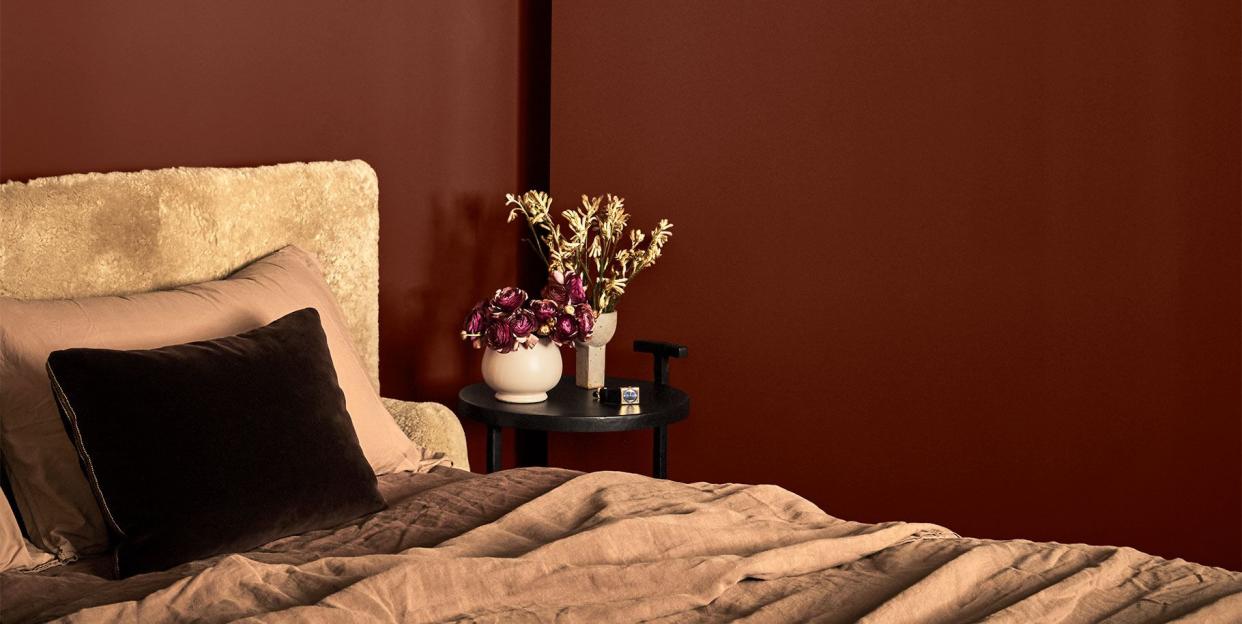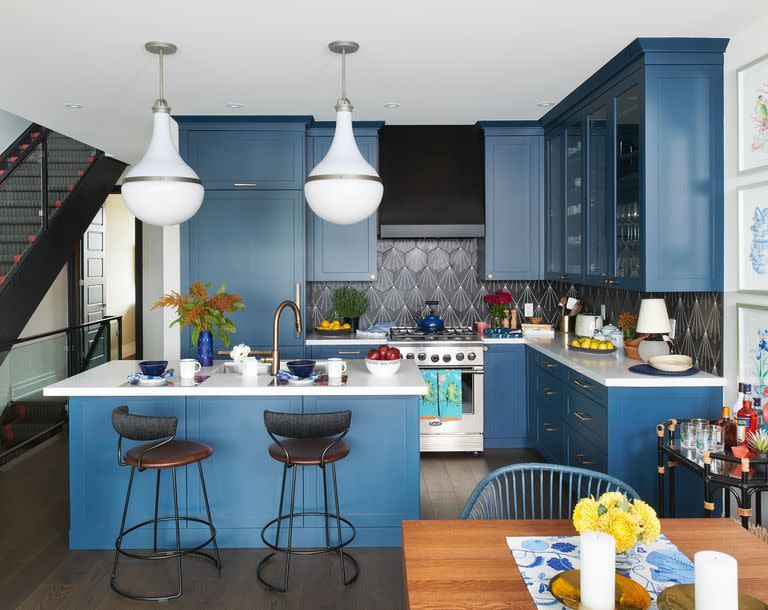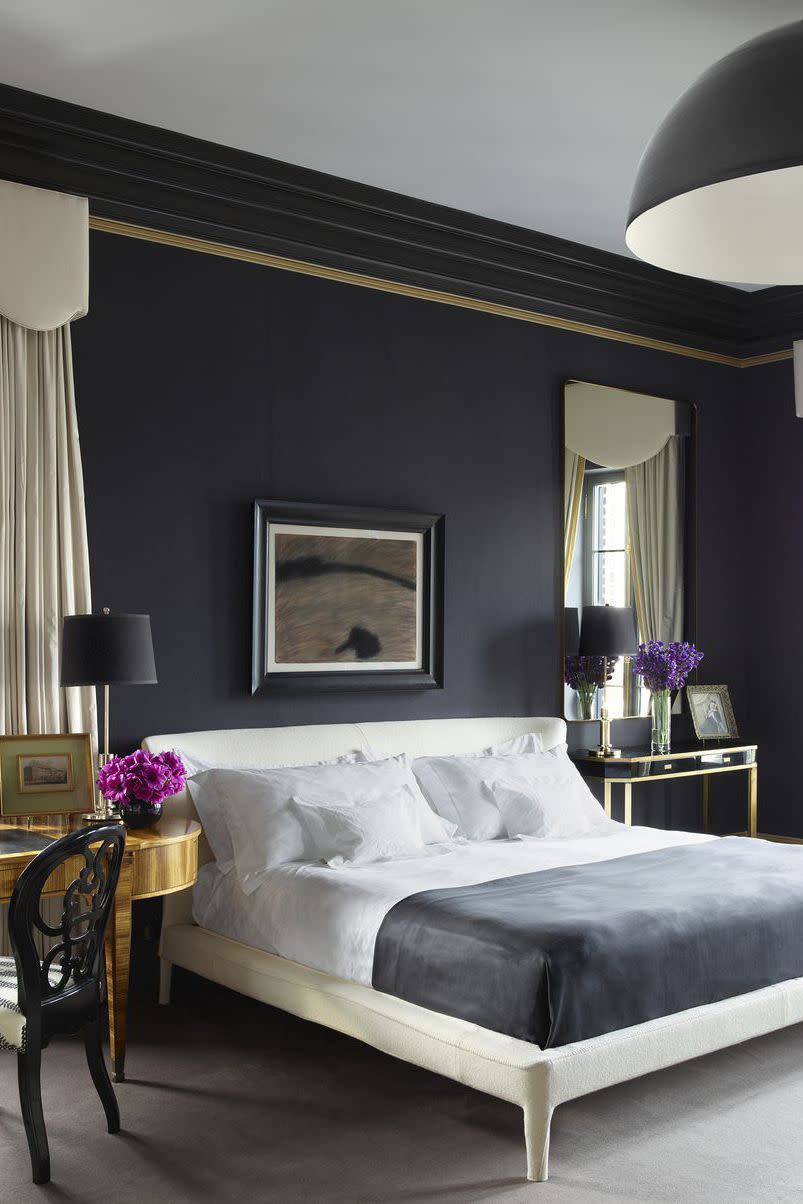Read This Before Choosing Satin vs. Eggshell Paint

You’ve finally narrowed down your (seemingly endless) options and decided on the perfect paint color. While your decision-making muscles may feel exhausted at this point, there is still more to consider before you get to painting. The finish you choose for your paint has the potential to make or break a space—every texture has distinct differences that affect both the appearance and performance of the paint. It’s important to consider the specific look you are going for, the type of room you are painting, the architecture of the space, and more. “It has a lot to do with how much light the space receives,” says Hannah Yeo, color marketing and development manager at Benjamin Moore. “Higher sheens will reflect the most light, while low sheens will absorb light. Different levels of sheen can affect how colors appear and add dimension to rooms.” A high-sheen finish can revive a dull room, while a low-sheen finish can mask any bumps or imperfections.
Satin and eggshell are two popular finishes that work well in a variety of spaces, both with a low-to-medium luster. “Both have a durable quality that makes them popular, and it ultimately comes down to the look you’re trying to achieve,” Yeo says.
Though satin and eggshell paint are often grouped together, they have some distinct differences that are important to understand before making a final decision. To help you distinguish the differences between satin and eggshell paint, and decide which to choose, here’s a comprehensive guide to perfecting your finishing touches.
Satin Paint

Satin finishes have a beautiful luster that is often described as appearing velvety. It is slightly less lustrous than semi-gloss, and can appear to be both flat and glossy, depending on the lighting in the room. Satin has a slightly higher sheen than eggshell, meaning that it is more reflective and durable.
Appearance of Satin Paint
While satin finishes do have a degree of luster, they are more commonly described as a glow than a shine. Satin is a great choice if you're looking to create an understated depth in a space, or enliven the paint color you choose.
Durability and Performance of Satin Paint
Satin paint is very durable, making it great for high-traffic areas. Satin paint can easily be cleaned, though it can lose its sheen if scrubbed too roughly. It is advised that you clean it with a wipe and avoid abrasive scrubs.
When to Use Satin Paint
Because of its durability, many people choose a satin finish for bathrooms, kitchens, and kids rooms. Satin is also a popular choice for trim, especially if you want to emphasize the architecture of a space. If you're using a satin finish, make sure your walls are smooth and blemish-free, as the luster of it will emphasize any imperfections.
Eggshell Paint

Eggshell paint finishes are low-luster, with a very subtle sheen that can be compared to the surface of an eggshell. While eggshell does not have too much luster, it will reflect and bounce light throughout a room, creating depth in a space without appearing overly shiny.
Appearance of Eggshell Paint
Eggshell paint provides a soft sheen that can be emphasized with brighter lighting or toned down with dimmer lighting. It is the lowest luster option before flat or matte finishes.
Durability and Performance of Eggshell Paint
Because eggshell is less lustrous than satin, it is also slightly less durable. That being said, it will still hold up better than flat or matte finishes would. Eggshell paint is a great option for walls in medium- to low-traffic areas, and can be easily cleaned.
When to Use Eggshell Paint
Eggshell is commonly used in living rooms and dining rooms, as it is durable and does not pick up dirt easily. If your walls have bumps or imperfections, an extra coat of eggshell can disguise them more easily than satin or high-gloss finishes.
You Might Also Like


